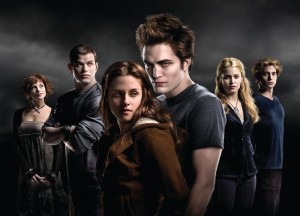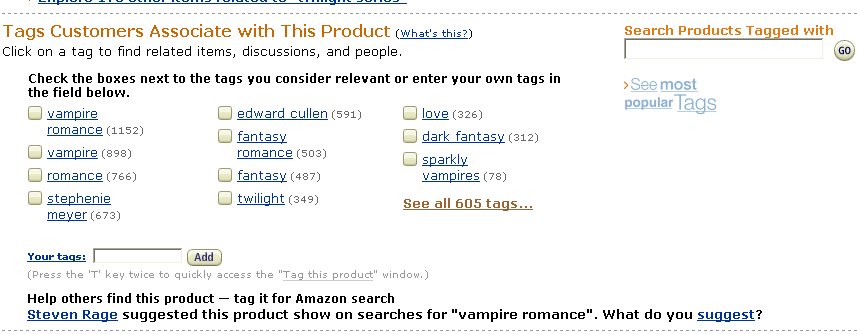That’s the phrase being used on some message boards to describe the vampires in Twilight — “blood-sucking fairies.” Apparently, hardcore  “horror fans” and “vampire aficionados” are repelled by the sparkly, Vegan vampires that inhabit Stephanie Meyers’ series. I’ve absorbed enough vampire lore to empathize. From Stoker’s Dracula, to King’s Salem’s Lot, to Murnau’s Nosferatu. Next to these monsters, the Twilight vampires seem, well, girly. Which is precisely why the series is so popular.
“horror fans” and “vampire aficionados” are repelled by the sparkly, Vegan vampires that inhabit Stephanie Meyers’ series. I’ve absorbed enough vampire lore to empathize. From Stoker’s Dracula, to King’s Salem’s Lot, to Murnau’s Nosferatu. Next to these monsters, the Twilight vampires seem, well, girly. Which is precisely why the series is so popular.
Fact: Twilight is less about vampires and more about romance — specifically, “teen romance.” I guess it’s not that big a stretch. Over time, vampires and erotica have become intertwined. So Meyers replaces the erotica with teenage angst. What’s the big deal?
It’s the way of fiction — genres morph. I might not like it, but who says vampires can’t be fairies and that little giggly teenage girls shouldn’t swoon for undead, limp-wristed, loners? In the same way I am free to place vampires in outer space, western-settings, or the White House, Stephanie Meyers is free to blend vampire fiction with, well, whatever she wants.
From Bookends blog, literary agent Jessica Faust comments on Women’s Fiction and, in the process, genre-blending itself:
The first thing to understand about genre definitions is that there’s a reason they are so difficult to understand. Genre definitions, like genres themselves, are fluid. They change with the market and with the times. In other words, years ago, there was a very clear line between what was considered romance and what was considered fantasy. Now, not so much. Books that were previously considered strictly fantasy are now finding their way into the romance section at bookstores and vice versa. Which is why I try to encourage authors not to get too hung up on the specifics of a genre. (emphasis mine)
I have always liked hard-to-define genres. My agent, not so much. So while agents are busy trying to find niches for their clients, many authors are trying to shake the restrictions imposed by genre definitions. Perhaps this is why I found Faust’s observations so liberating. “Genre definitions, like genres themselves, are fluid.” This “fluidity” is in play with the Twilight saga.
For instance, the Amazon ranking for Twilight has garnered a whopping 605 tags! The top tags / genre definitions for the book (see image below), are “vampire romance” (1152), “vampire” (898), “romance” (766), “fantasy romance” (503), “fantasy” (487), or “dark fantasy” (312). My favorite, however: “sparkly vampires” (76). Okay, so what is it? A YA / vampire / fantasy / dark fantasy / romance novel? And could it be that the multiple tags / genres have contributed to its popularity?
While Twilight’s genres are not that disparate, it’s a pretty good example of how mating two genres can birth a specific (albeit, mutated) offspring (in this case, fan base). Okay, so it’s not really “vampire lit.” It’s enough about vampires to tickle the fancy of casual horror fans and wannabe Goths. It’s also enough about romance to attract housewives, middle school girls, and effeminate males. Me? I despise having my “dark fantasy” polluted by “romance.” But the notion of “sparkly vampires”… well, that’s genre mutation at its best.
















I don't see how genres could be any other way than fluid. And I surmise one of the possible reasons agents don't particularly enjoy this pattern is because some publishing houses are set in their ways. They want specifics so editors can pitch them to pub boards so the marketing teams can grasp their focus. It seems the more fluid a genre is, the more possible appeal it will have as you basically pointed out in this post, Mike, so I wonder about the "need" for absolutes in the genre factor.
While my novels lean heavily on your hated romance ;), they aren't category romance. So it's not enough to classify them as straight romance–at least it isn't for me.